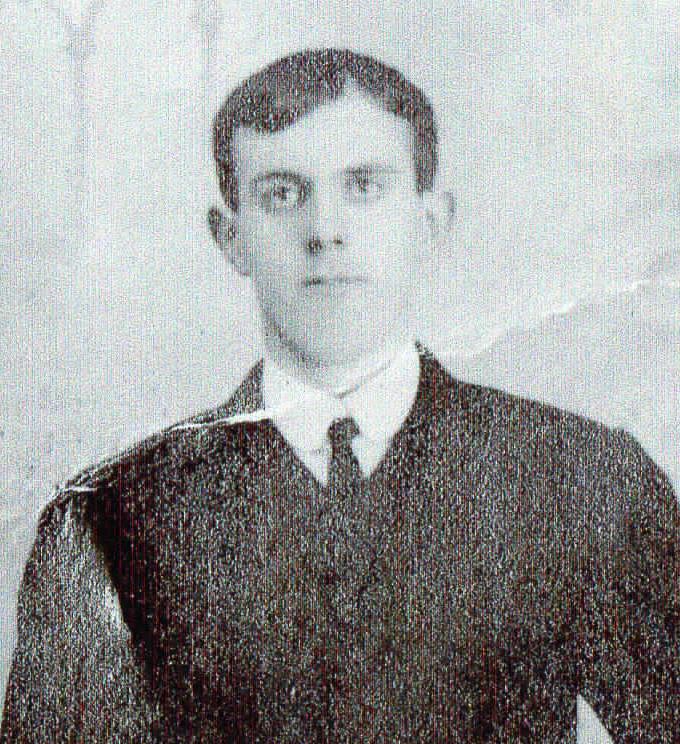Sgt
William Waterstone Dick
Informatie over geboorte
|
Geboortedatum: 26/08/1887 |
|
Geboorteplaats: Bonnyrigg, Midlothian, Schotland, Verenigd Koninkrijk |
Algemene Informatie
|
Beroep: matrijzenmaker |
Informatie legerdienst
|
Land: Schotland, Verenigd Koninkrijk |
|
Strijdmacht: British Expeditionary Force |
|
Rang: Sergeant |
|
Service nummer: 12568 |
|
Eenheden: — Devonshire Regiment, 9th Bn. (Laatst gekende eenheid) |
Informatie over overlijden
|
Datum van overlijden: 26/10/1917 |
|
Plaats van overlijden: Geluveld, België |
|
Doodsoorzaak: Killed in action (K.I.A.) |
|
Leeftijd: 30 |
Begraafplaats
|
Tyne Cot Cemetery Plot: LII Rij: E Graf: 11 |
Onderscheidingen en medailles 3
|
1914-15 Star Medaille |
|
British War Medal Medaille |
|
Victory Medal Medaille |
Points of interest 2
| #1 | Geboorteplaats | ||
| #2 | Plaats van overlijden (bij benadering) |
Mijn verhaal
Sergeant William Waterstone Dick served in the Devonshire Regiment, 9th Battalion, part of the 20th Brigade of the 7th Division.
On October 26, the 9th Battalion took part in the Second Battle of Passchendaele. As part of the 7th Division, they were ordered to attack and conquer the village of Gheluvelt. The 9th Battalion took position on the far left side of the divisional front. They had to stay north of the Menin Road. Under heavy machine gun fire, they managed to reach a railroad cutting just northwest of the church of Gheluvelt. From this position, several attempts were made to conquer the village. All failed. After several hours the Germans started to counterattack. After suffering heavy losses and after using every single reinforcement they had, the 7th Division had to retreat almost to their original frontline. The losses were enormous. Only one officer of the 9th Battalion was unharmed. Among the other ranks 143 were killed or missing and 151 wounded. It still is the worst day in the history of the battalion.
The initial grave of sergeant William Dick was found just a few meters north of the railway cutting, the tramline between Ypres and Menin. He was probably killed in action while advancing to or retreating from the railway cutting. He was identified by his identification disc and his Army Book 64, his active service paybook. On his tombstone his rank is mentioned as Private. It’s unclear why his rank is stated as private. After further research, we came to the conclusion that he had the rank of Sergeant. He had been evacuated on medical reasons twice before. His mother Marion received a notice each time. On these forms, one from July 1916 and another from May 1917, his rank is both times stated as Sergeant. His remains were reburied on the Tyne Cot Cemetery after the war.
On October 26, the 9th Battalion took part in the Second Battle of Passchendaele. As part of the 7th Division, they were ordered to attack and conquer the village of Gheluvelt. The 9th Battalion took position on the far left side of the divisional front. They had to stay north of the Menin Road. Under heavy machine gun fire, they managed to reach a railroad cutting just northwest of the church of Gheluvelt. From this position, several attempts were made to conquer the village. All failed. After several hours the Germans started to counterattack. After suffering heavy losses and after using every single reinforcement they had, the 7th Division had to retreat almost to their original frontline. The losses were enormous. Only one officer of the 9th Battalion was unharmed. Among the other ranks 143 were killed or missing and 151 wounded. It still is the worst day in the history of the battalion.
The initial grave of sergeant William Dick was found just a few meters north of the railway cutting, the tramline between Ypres and Menin. He was probably killed in action while advancing to or retreating from the railway cutting. He was identified by his identification disc and his Army Book 64, his active service paybook. On his tombstone his rank is mentioned as Private. It’s unclear why his rank is stated as private. After further research, we came to the conclusion that he had the rank of Sergeant. He had been evacuated on medical reasons twice before. His mother Marion received a notice each time. On these forms, one from July 1916 and another from May 1917, his rank is both times stated as Sergeant. His remains were reburied on the Tyne Cot Cemetery after the war.
Bronnen 2
|
Atkinson C.T. ,The Devonshire Regiment, 1914-1918, (London, Eland Brothers, Kent & Co. Ltd., 1926), pg. 288-95. Gebruikte bronnen |
|
McCarthy C., The Third Ypres Passchendaele. The Day-by-Day Account, (London, Arms & Armour Press, 1995), pg. 125. Gebruikte bronnen |
Meer informatie 3
|
Commonwealth War Graves Commission Database https://www.cwgc.org/find-records/find-war-dead/casualty-details/462556 |
|
Namenlijst (In Flanders Fields Museum) https://namenlijst.org/publicsearch/#/person/_id=cdce9b03-535b-413f-bcf2-a1ca5c0c4c40 |
|
Lives of the First World War (Imperial War Museum) https://livesofthefirstworldwar.iwm.org.uk/lifestory/1628167 |
